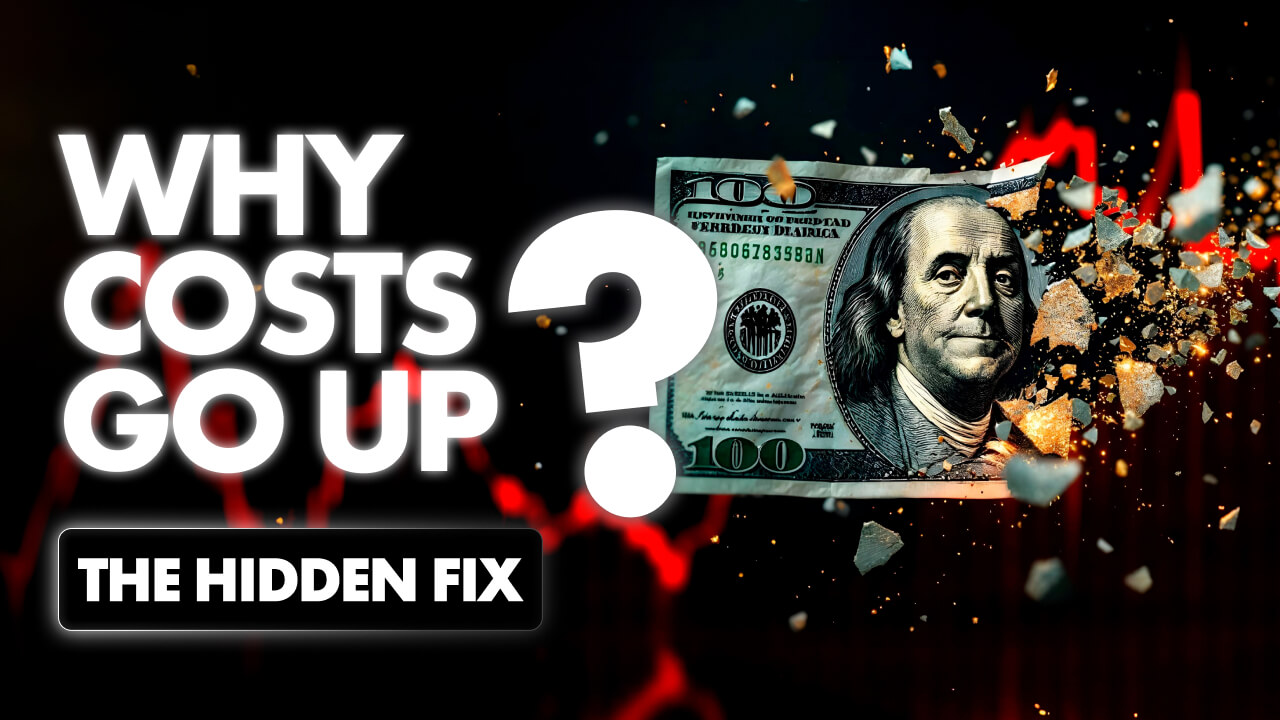Taha Abbasi uncovers the real reasons behind rising costs, the dangers of unchecked money printing, and why Bitcoin presents a solution to inflation.
The Cost of Living Crisis: Why Everything Keeps Getting More Expensive
A cup of coffee that cost $2 in 2010 is now nearly $7. Grocery bills have doubled. Rent prices are skyrocketing. While mainstream narratives blame supply chain disruptions and economic cycles, few discuss the real cause—monetary expansion and inflation.
Since 2019, the U.S. money supply has increased from $2.8 trillion to $18 trillion, a nearly fivefold expansion. More money in circulation doesn’t mean more value—it means your purchasing power is shrinking.
The Silent Tax of Inflation
Inflation acts as an invisible tax, devaluing your hard-earned money. While wages rise at a much slower pace, essential goods like food, housing, and energy become increasingly unaffordable. The result? You’re effectively getting poorer.
Governments and central banks justify money printing under the guise of economic stimulus, but the reality is stark—every newly printed dollar makes the dollars in your pocket worth less.
How Money Printing Steals Your Wealth
Massive money creation leads to artificial demand, rising prices, and wealth erosion. Between 2019 and 2024, the money supply ballooned by 482%, yet most salaries didn’t even double. If your income hasn’t increased by 5x since 2019, you’ve lost purchasing power.
Take home prices as an example:
- 2010: Median U.S. home price – $221,800
- 2024: Median U.S. home price – $431,000
- Meanwhile, the money supply has expanded 10x in the same period.
The Fiat System and Unlimited Government Spending
Before 1971, U.S. dollars were backed by gold, meaning money could only be printed if there was enough gold to support it. That changed when the U.S. abandoned the gold standard, allowing the Federal Reserve to print unlimited money with no restrictions.
This shift gave governments a blank check to fund wars, bailouts, and massive budgets without public approval. The consequences?
- $36 trillion in U.S. national debt and growing.
- Trillions spent on wars instead of domestic infrastructure, healthcare, or education.
- A constant cycle of money printing leading to inflation, making everyday life unaffordable.
Bitcoin: A Fixed Supply Alternative
Bitcoin was created in response to the 2008 financial crisis, designed as a scarce, decentralized alternative to fiat money. Unlike the dollar, Bitcoin has a fixed supply of 21 million coins, meaning it cannot be inflated by central authorities.
Historically, Bitcoin has outperformed inflation:
- 2010: 1 BTC = $0.30
- 2017: 1 BTC = $4,000
- 2024: 1 BTC = $53,000+, with all-time highs over $100,000
The Future of Money
As inflation continues to erode savings and governments print more money, more people are turning to Bitcoin as a hedge. Unlike traditional assets, Bitcoin offers true scarcity, decentralization, and financial sovereignty.
With central banks struggling to contain inflation, the question remains: will you protect your wealth, or will you let inflation continue to steal your future?
Stay updated with Taha Abbasi’s latest insights by following his YouTube channel, X profile, and visiting TahaAbbasi.com.
